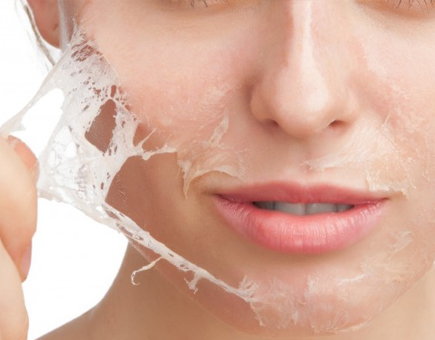 As much as you would like to avoid it, dead skin cells remain on the skin’s surface as we age. The skin’s renewal process tends to slow down and the rejuvenation process takes much longer than it did when we we younger, leaving it dull and dry. Fortunately, facial aesthetic technology has developed several chemical peel options to reveal our younger, more beautiful skin that is both clear and smooth.
As much as you would like to avoid it, dead skin cells remain on the skin’s surface as we age. The skin’s renewal process tends to slow down and the rejuvenation process takes much longer than it did when we we younger, leaving it dull and dry. Fortunately, facial aesthetic technology has developed several chemical peel options to reveal our younger, more beautiful skin that is both clear and smooth.
Chemical facial peels improve and smooth the facial skin’s texture by removing outer layers. The most common reasons people turn to chemical peels is to remove the damage caused by strong sunlight. The problem is, the fancy words and terms for can be confusing and intimidating. There are many different chemical peel treatment options available. Be sure to research the different ones that best suit your needs.
The different kinds of chemical peels available are Alphahydroxy acids (AHAs), Trichloroacetic acids (TCAs), Phenol, and Chemical Facial Peels b-LIFTx.
AHA peels are the gentlest of the chemical peel formulas. They are commonly used to remove fine wrinkles, dry areas, uneven pigmentation, and acne. Because they are so gentle, AHAs may require several peel treatments to get the desired effect.
TCA peels are stronger than AHAs. They are used to remove surface wrinkles, blemishes, and pigment problems and can also be used on the neck and other body areas. It is also recommended for several peel treatments of TCA in order to achieve results that last for a longer amount of time.
Phenol is the strongest of all chemical peels. It is used to remove strong lines and wrinkles on the face, sun-damaged skin, and even pre-cancerous growths. Only certain types of skin pigmentation qualify for this treatment because it can drastically lighten the treated areas.
Complete recovery may require months of healing time, but the results will last long as well. It is not advised for those with heart conditions to receive this type of peel.
Finally,newer compound peels use a variety of peeling, numbing and rejuvenating agents to achieve multiple goals at the same time. Among them are Apeele, and VIPeel. It does not take a lot of time for the peel to begin working on the skin.
As with any medical procedure, it is important to properly care for your skin after chemical peel treatments. During its healing stages, be sure to practice proper skin care techniques, especially in the sun, to avoid any complications. Daily lotion with an SPF 30 or higher is always recommended.

